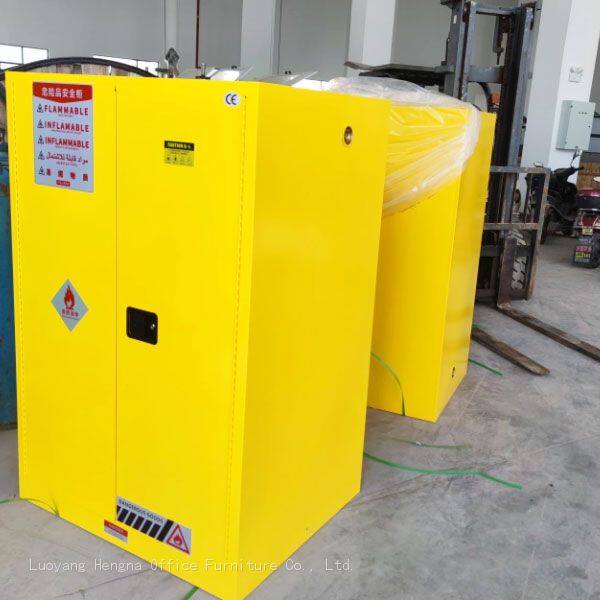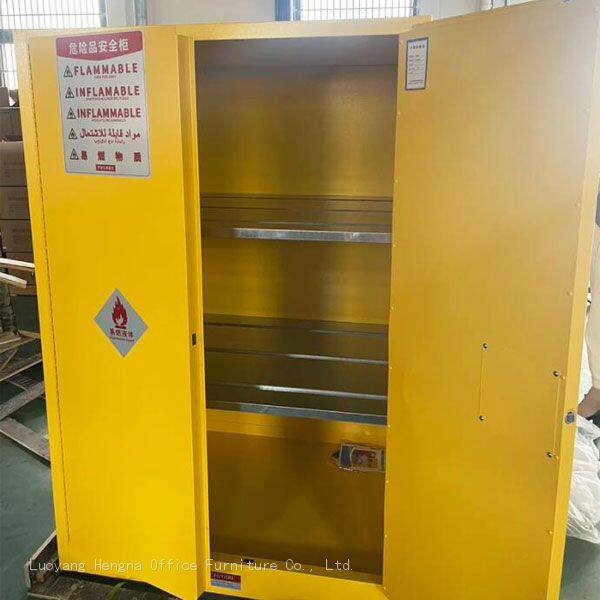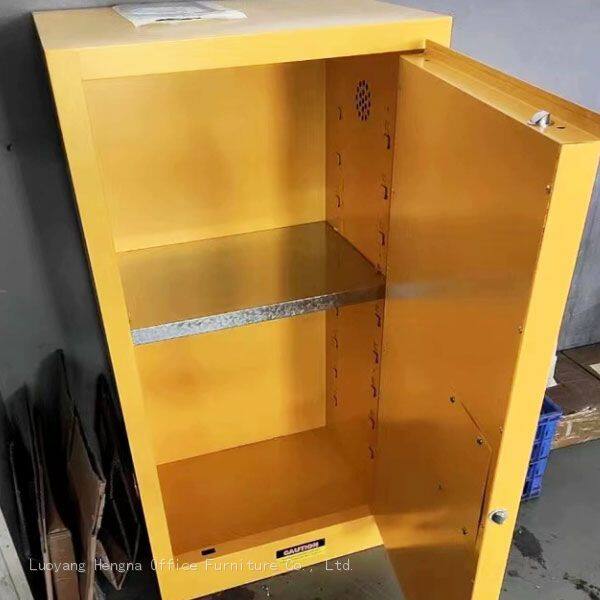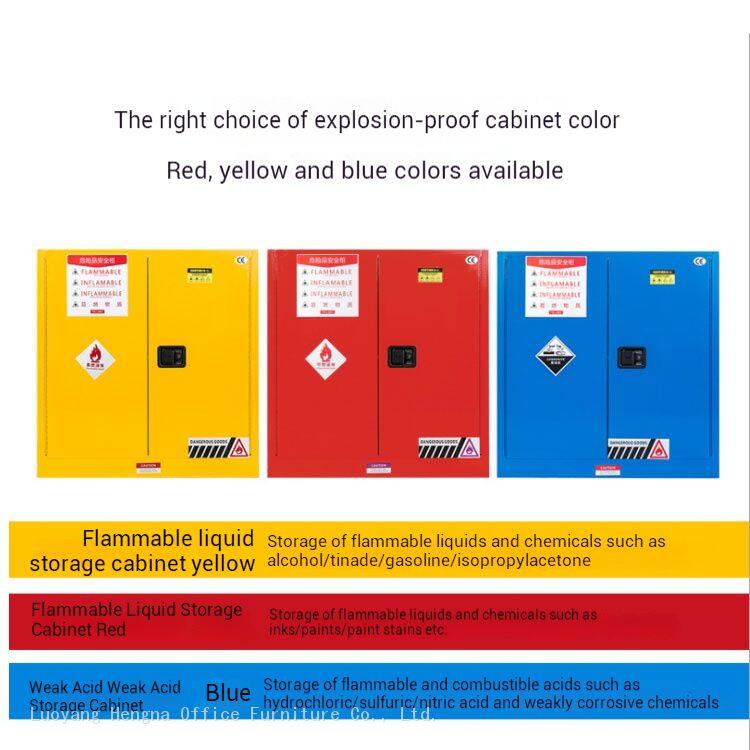Home > Blog > School Lab Safety: Essential Flammable Cabinet Guidelines for Educational Institutions
-
 Sarah
Hi there! Welcome to my shop. Let me know if you have any questions.
Sarah
Hi there! Welcome to my shop. Let me know if you have any questions.
Your message has exceeded the limit.

School Lab Safety: Essential Flammable Cabinet Guidelines for Educational Institutions
2025-11-06 14:04:57
Educational institutions face unique challenges in managing laboratory safety while providing effective hands-on learning experiences for students. The implementation of proper flammable storage cabinets in school laboratories represents a critical safety measure that protects students, staff, and facilities while supporting educational objectives. This comprehensive guide explores the essential guidelines for flammable cabinet implementation in educational settings and how proper storage solutions can enhance both safety and educational effectiveness.

Understanding Educational Laboratory Requirements
School laboratories serve multiple educational purposes while maintaining safety for students with varying experience levels. Flammable storage requirements must balance accessibility for educational activities with security and safety considerations. Different educational levels may require different approaches to chemical storage, with elementary schools needing minimal chemical storage and high schools requiring more comprehensive storage solutions.
Educational laboratory requirements extend beyond safety to include teaching effectiveness and learning outcomes. Flammable storage cabinets should support educational objectives by allowing appropriate access to chemicals while maintaining safety protocols. The organization of stored chemicals should facilitate teaching proper chemical handling and storage practices, reinforcing safety education as part of the curriculum.
Age-Appropriate Storage Solutions
Different educational levels require age-appropriate storage solutions that match students’ maturity and experience levels. Elementary schools may need limited chemical storage with basic safety features, while middle schools may require more comprehensive storage with additional security measures. High schools and colleges typically need sophisticated storage systems that can accommodate diverse chemical inventories while maintaining strict safety protocols.
Age-appropriate considerations extend to cabinet placement, access control, and supervision requirements. Younger students may require cabinets that are less accessible or require teacher assistance for access, while older students may have more controlled access with proper supervision. Educational institutions should implement storage solutions that match their students’ developmental levels while maintaining appropriate safety standards.
Integration with Curriculum Development
Flammable storage cabinets should support curriculum development and educational objectives rather than hinder teaching effectiveness. The organization of stored chemicals should align with teaching sequences and learning objectives, allowing teachers to access needed chemicals efficiently during demonstrations and student activities. Some educational institutions organize cabinets by chemical class or by curriculum unit to support teaching effectiveness.

Curriculum integration benefits extend to supporting various teaching methodologies including inquiry-based learning, project-based learning, and demonstrations. Organized storage systems enable teachers to prepare for lessons efficiently and adapt to spontaneous teaching opportunities. Some schools use storage cabinet organization as teaching tools themselves, demonstrating proper chemical storage practices and safety protocols.
Teacher Training and Support
Educational institutions must provide comprehensive training for teachers on flammable storage cabinet operation, safety procedures, and emergency response. Teachers should understand the specific features of storage systems, proper chemical handling procedures, and how to integrate safety education into their teaching. Regular training updates ensure that teachers remain current with best practices and regulatory requirements.
Teacher support considerations extend to providing clear documentation, standard operating procedures, and access to safety resources. Educational institutions should establish clear protocols for chemical access, storage, and emergency response that teachers can easily follow. Some schools implement mentorship programs where experienced teachers guide newer staff in proper chemical storage and safety practices.
Student Safety Education
Flammable storage cabinets can serve as educational tools for teaching students about chemical safety and proper laboratory practices. The organization and features of storage cabinets can be incorporated into safety education programs, helping students understand the importance of proper chemical storage and handling. Visual organization systems including color-coding and clear labeling support student learning about chemical classification and safety.
Student education benefits extend to developing safety consciousness and responsible laboratory behavior. When students understand the reasons behind storage cabinet requirements and safety procedures, they are more likely to follow protocols consistently. Some educational institutions use storage cabinet inspections and maintenance as student learning activities, promoting ownership of safety practices and responsibility for laboratory safety.

Budget Constraints and Cost-Effective Solutions
Educational institutions often operate under tight budget constraints that require careful consideration of storage solution investments. Schools must balance safety requirements with cost considerations, seeking solutions that provide necessary protection while remaining affordable. Cost-effective solutions may include modular systems that can be expanded as budgets allow or shared storage solutions between multiple departments.
Budget considerations extend to long-term value and durability of storage solutions. Educational institutions should consider the total cost of ownership, including maintenance requirements, expected lifespan, and potential for expansion. Some schools may qualify for grants or funding specifically for safety equipment upgrades, helping to offset initial investment costs while enhancing laboratory safety.
Maintenance and Inspection Protocols
Regular maintenance and inspection of flammable storage cabinets are essential for maintaining safety performance in educational settings. Schools should establish comprehensive inspection schedules that include daily visual checks by teachers, weekly inspections by safety coordinators, and professional inspections on an annual basis. These inspections should cover all cabinet components including doors, locks, vents, and structural integrity.
Maintenance procedures should address any identified issues promptly to prevent potential safety hazards. Educational institutions should maintain detailed records of all inspections and maintenance activities, creating documentation that demonstrates compliance with safety regulations and supports continuous improvement of safety programs. Some schools involve students in appropriate maintenance activities as part of their safety education, promoting awareness and responsibility.
Emergency Preparedness and Response

Educational institutions must prepare for various emergency scenarios involving flammable liquids, including spills, fires, and chemical exposures. Storage cabinets should be integrated into the school’s emergency response plan, with clear procedures for evacuation, containment, and cleanup. Regular emergency drills help students and staff practice response procedures and ensure preparedness for actual incidents.
Emergency preparedness considerations extend to communication systems, evacuation routes, and coordination with local emergency responders. Schools should establish clear protocols for reporting incidents, evacuating areas, and communicating with emergency services. The integration of storage cabinet emergency procedures with the school’s overall emergency response plan ensures comprehensive preparedness and rapid response to potential incidents.
Tags: School Lab Safety, Flammable Cabinet Guidelines, Educational Institutions

